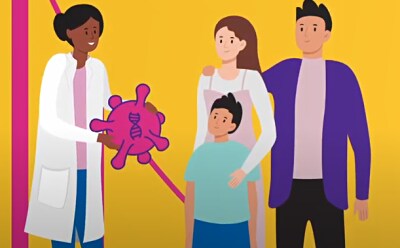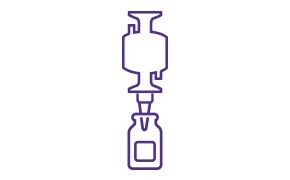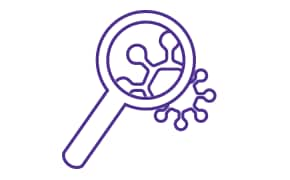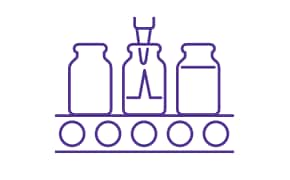Viral Vector Downstream Processing
Viral vector purification processes have historically been based on systems used for monoclonal antibodies, which are not designed to deliver the necessary level of recovery.
The introduction of new technologies specifically designed for gene therapy viral vector downstream processing offers the opportunity to increase yield and throughput. Among the approaches that can be leveraged to optimize viral vector downstream processing include:
- Ultrafiltration/diafiltration operations, particularly with the use of tangential flow filtration (TFF) for cell or viral harvesting and purification, downstream protein concentration and diafiltration, as well as in final formulation
- Intensified chromatography processes that reduce the number and size of unit operations, via technologies such as high-productivity, single-use chromatography membrane adsorbers
These downstream technologies offer the potential to reduce viral vector purification times from hours to minutes, while improving recovery. In addition, they can facilitate scale-up, reduced the process footprint, and enable more efficient facility utilization.
Primary Clarification
The crude medium containing viral vectors is depth filtration or a combination of both centrifugation and depth filtration to remove large cellular debris and other contaminants.
Secondary Clarification
Clarified medium from the primary clarification is further purified through additional steps.
Ultrafiltration/Diafiltration
Ultrafiltration and diafiltration are used for concentration and buffer exchange, respectively. The viral vector is separated from impurities using size-based filtration. Diafiltration removes salt and other molecules, replacing with the buffer of choice.
Chromatography
At least two chromatography methods are used to purify the viral vector including ion exchange, affinity and size exclusion.
Virus Filtration
The purified viral vector is subjected to nanofiltration with 15 nanometers pores to remove adventitious viruses, endotoxins, and any other remaining impurities and aggregates.
Sterile Filtration
Sterile filtration, or bioburden reduction, can be used multiple times in the process. The feed stream is passed through a 0.4 or 0.2 micron sterilizing grade filter to remove bacteria and other microorganisms that have been introduced during the processing.
Final Fill
The purified and sterile viral vector is filled into the final intended container. Careful considerations need to be given here for formulation, packaging materials, storage condition to ensure stability and integrity.
Visit our document search for data sheets, certificates and technical documentation.
Related Articles
- Our overview of scalable tangential flow filtration for viral vector production will provide key considerations for developing and optimizing your downstream process.
- Benzonase®endonuclease efficiently removes nucleic acid contaminants from viral production, crucial for cell and gene therapies and vaccines.
- Explore strategies for separating empty and filled capsids in viral vector production. Learn about upstream strategies and how trends in AAV capsid design impact purification.
- This page describes key considerations for cell lysis and how the combination of a high salt concentration and a salt tolerant endonuclease can be used to increase vector titer and infectivity during AAV vector manufacturing.
- See All (10)
Find More Articles and Protocols
How Can We Help
In case of any questions, please submit a customer support request
or talk to our customer service team:
Email custserv@sial.com
or call +1 (800) 244-1173
Additional Support
- Chromatogram Search
Use the Chromatogram Search to identify unknown compounds in your sample.
- Calculators & Apps
Web Toolbox - science research tools and resources for analytical chemistry, life science, chemical synthesis and materials science.
- Customer Support Request
Customer support including help with orders, products, accounts, and website technical issues.
- FAQ
Explore our Frequently Asked Questions for answers to commonly asked questions about our products and services.
Workflow


Viral Vector Upstream Processing
Making the right upstream process decisions not only impacts viral vector titer, but downstream processes, timelines, and regulatory acceptance

Viral Vector Formulation and Final Fill
Formulating a commercially viable gene therapy demands a high level of application and regulatory expertise

Viral Vector Characterization and Biosafety Testing
Critical biosafety testing and characterization of viral vector products can help to fully analyze key quality attributes: identity, potency, safety, and stability

Viral Vector Contract Development and Manufacturing
CDMO partnerships play a critical role in advancing clinical pipelines and achieving successful commercialization
To continue reading please sign in or create an account.
Don't Have An Account?
